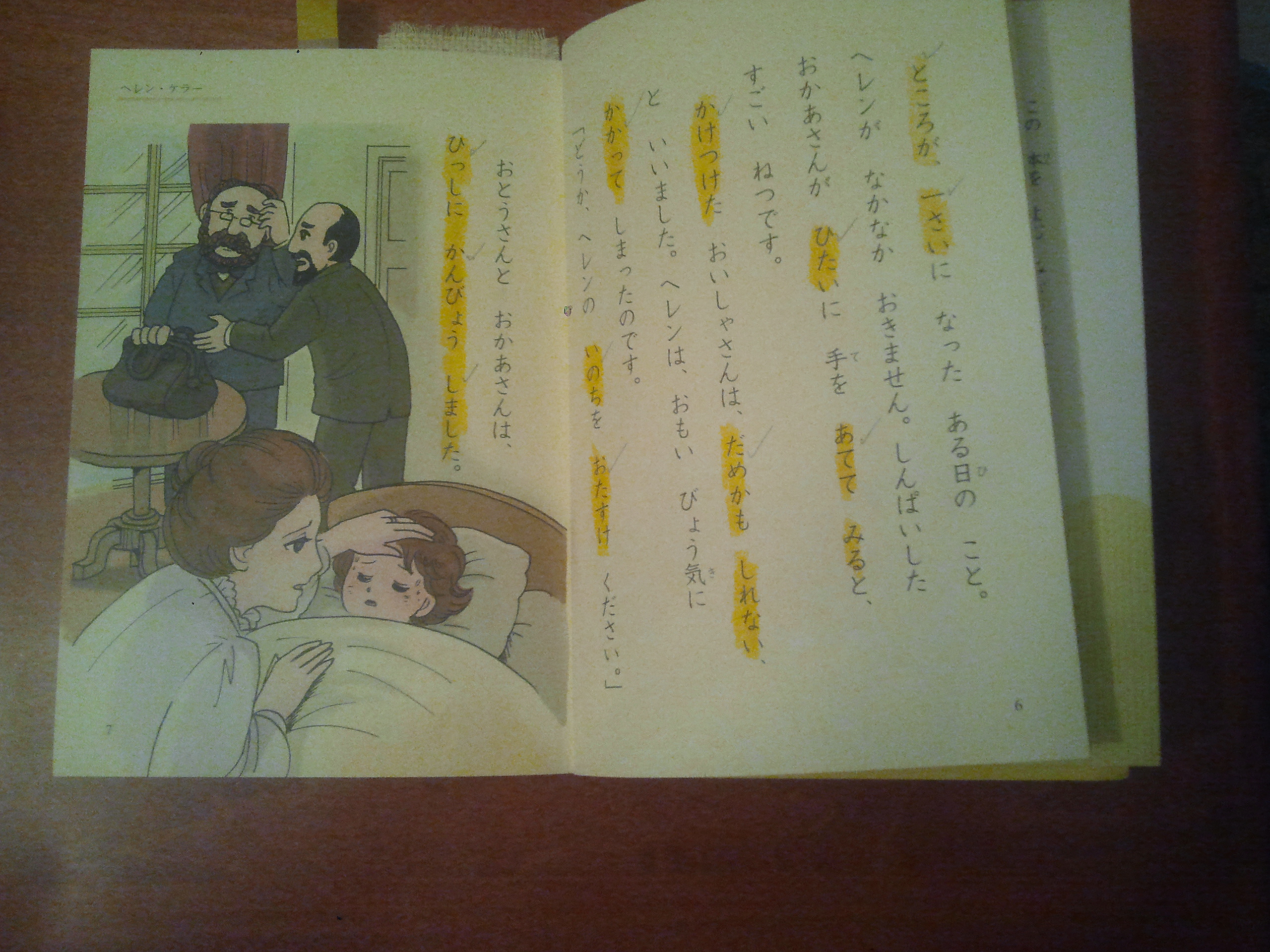I have gotten to the point in my studies where I am learning to read again. It is an interesting experience learning to read. To be honest, I do not remember much about learning to read in English. It is fun and exciting to be learning to read all over again in a new language.
This might seem like a strange thing to say, that I am learning to read. In a sense, I have been reading all along. One of the first things one does as a foreign learner is to learn hiragana and katakana, and reading has been a part of my studies all along. For example, I have been reading Japanese subtitles for Anime since very early in my studies. Yet, even so, I am only now venturing into the wonderful, magical of books.
In starting to read books, I realized I did need a strategy. One of the biggest difficulties is that I do not really have the vocabulary I need even for basic children’s books. It is quite amazing how many words one needs to know. One of the big dilemmas is what to do when one runs across new or unfamiliar words (particularly if there are a lot of them). Does one stop and look up words? The difficulty with that is that it makes reading very slow, and it is hard to really get involved in the story that way. Yet, without looking up words, it is hard to know what is going on.
I looked for advice online, and there is quite a bit of conflicting advice; however, I did get the idea to highlight new and unfamiliar words to look up later. This is working really well, I think. It is helping my understanding and comprehension, even though I have not gotten all that far in looking up new words. To my surprise, I found out that I actually understood much more when I highlighted unfamiliar words (even without looking them up).
 I think I understand why this is working for me. When reading in English, I must automatically filter out words I do not know, gleaning the meaning from context from the words that I do know. In Japanese, that is hard to do. To begin with, one’s eyes must work completely differently. Japanese books are written right to left and vertical. That in itself is an adjustment. Also, Japanese generally does not put in spaces for words, and it is rather fluid as to where words begin and end. Furthermore, Japanese grammar and sentence structure is quite different from English. I think that these differences make it hard to use strategies one naturally uses with English without additional help.
I think I understand why this is working for me. When reading in English, I must automatically filter out words I do not know, gleaning the meaning from context from the words that I do know. In Japanese, that is hard to do. To begin with, one’s eyes must work completely differently. Japanese books are written right to left and vertical. That in itself is an adjustment. Also, Japanese generally does not put in spaces for words, and it is rather fluid as to where words begin and end. Furthermore, Japanese grammar and sentence structure is quite different from English. I think that these differences make it hard to use strategies one naturally uses with English without additional help.
I think that when I highlight words, I can section them off in my mind, and then focus on the words that I do understand. Before, I would run into unfamiliar words and, whether I looked them up or not, I would start to think that the entire book was too difficult for me. With the unfamiliar words highlighted, I realized I was actually able to understand a lot of other words and glean the general meaning of what was going on.
When I have gone back later to look up the unfamiliar words, I have checked them off with a pencil. Then I have read the text again and found that I could fully understand, which was really quite exciting.